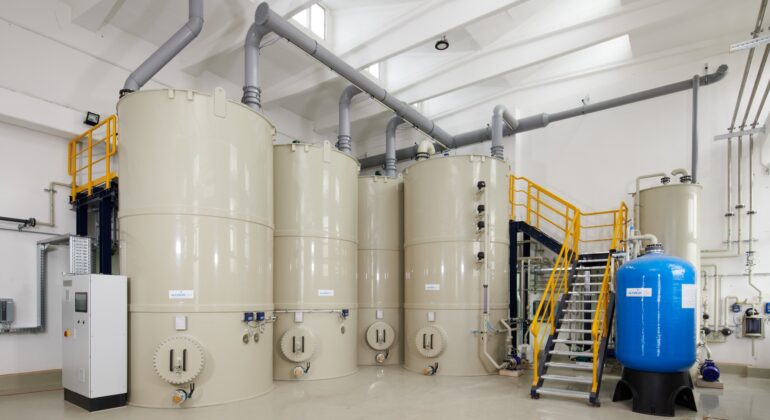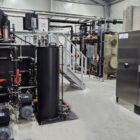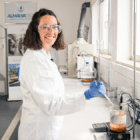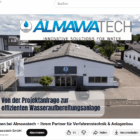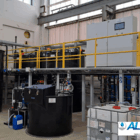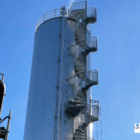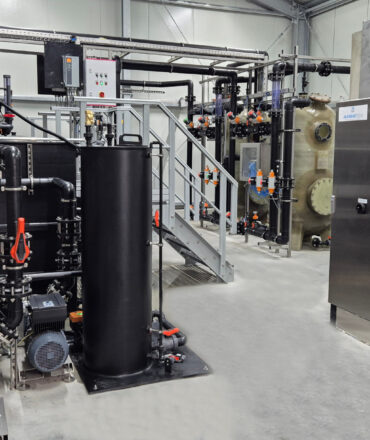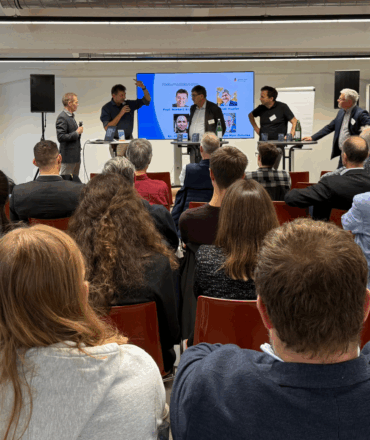Wastewater treatment in the metal industry requires efficient and reliable solutions in order to comply with the legal requirements of Annex 40 of the Wastewater Ordinance and at the same time ensure economical and stable operation. Chemical-physical (CP) plants (also known as precipitation and flocculation plants) play a central role here, as they represent an efficient and adaptable method for treating industrial wastewater with different levels of contamination.
In this article, we explain how CP systems work, look at the special requirements for the removal of heavy metals and emulsions and highlight the typical contaminants in wastewater streams from the metal industry.
Table of contents
Functionality of CP systems
CP plants are based on a combination of chemical and physical processes that work together to remove pollutants from wastewater. Essentially, treatment takes place in several steps:
- Pre-treatment: This involves the separation of coarse impurities, solids and oils. Mechanical processes such as sieves, grease separators or sedimentation tanks are often used.
- Neutralization: Wastewater that is either acidic or alkaline is adjusted to a neutral pH value by adding acids or alkalis. This is important for the following treatment steps.
- Precipitation and flocculation: In this step, dissolved pollutants are converted into an insoluble form. Process additives based on metal salts and acids/alkalis(ALMA AQUA process additives for wastewater treatment) are added to cause the precipitation of heavy metals as hydroxides or sulphides. These insoluble particles are then combined by flocculants to form larger agglomerates that can be separated more easily.
- Separation: The resulting sludge and flocs are separated using physical processes such as sedimentation, flotation or filtration. Typical technologies are chamber filter presses or belt filters, which dewater the sludge and process it into a solid filter cake.
- Post-treatment: As a rule, final purification is carried out using activated carbon filters, ion exchangers or reverse osmosis in order to reduce residual contamination to the legal limits.

Photo: Our CP system ALMA CHEM MCW as a batch system with cyanide decontamination
Origin of wastewater in the metal industry
The metal industry is one of the key sectors that produces significant quantities of industrial wastewater. This wastewater is generated in various processes and work areas and is typically heavily contaminated with various pollutants. These pollutants must be specifically treated before the wastewater can be discharged into the environment. The various sources and types of wastewater produced in the metal industry are discussed in more detail below.
1. electroplating processes (electroplating waste water)
Electroplating processes, in which metallic coatings are applied to workpieces, produce wastewater that is particularly heavily contaminated with heavy metals such as chromium, nickel, copper, zinc and cadmium. Various baths are used in electroplating, such as pickling, degreasing and electrolyte baths, whose wastewater also contains chemicals such as acids, alkalis and complexing agents. This wastewater must be specially treated to precipitate the heavy metals and break down other chemical compounds.
2. pickling
Pickling plants are companies that remove oxide and dirt layers from metals by immersing them in acidic solutions. This produces pickling wastewater that contains high concentrations of acids, in particular sulphuric acid, hydrochloric acid and phosphoric acid. In addition, this wastewater often contains dissolved metals and organic contaminants. This acidic wastewater must be neutralized and the metals dissolved in it must be removed before it can be discharged.
3. anodizing mode
Anodizing plants, which are used to refine aluminium, produce wastewater that is heavily contaminated with sulphuric acid and aluminium salts. During the anodizing process, aluminium is oxidized in an acidic solution, resulting in wastewater with a high acid content and dissolved metal ions. This wastewater requires thorough neutralization and precipitation of the metal ions.
4. burnishing
In burnishing plants, where metals are given a dark, corrosion-resistant coating through chemical treatment, waste water is produced that contains both organic chemicals and heavy metals. This wastewater is often highly alkaline or acidic and requires extensive treatment to neutralize and remove the heavy metals.
5. hot-dip galvanizing and hot-dip tinning
Hot-dip galvanizing plants and hot-dip tinning plants produce wastewater that primarily contains zinc and tin compounds as well as acids. This wastewater is produced during the surface treatment of metals, which are protected by immersion in liquid zinc or tin baths.
6. hardening shop
Hardening shops, where metals are hardened by heat treatment and chemical processes, produce wastewater that is contaminated with oil, emulsions and chemicals such as cyanides and nitrites. This wastewater is particularly difficult to treat as it contains both organic and inorganic pollutants that require complex multi-stage treatment.
7. printed circuit board production
PCB manufacturing, an important sector of the electronics industry, produces wastewater containing copper, lead, tin and other heavy metals as well as acids and alkalis. This wastewater must be carefully treated to remove the heavy metals and neutralize the chemical ingredients.
8. battery production
Battery production produces wastewater that is heavily contaminated with heavy metals such as lead, mercury and cadmium as well as acids. This wastewater requires multi-stage treatment in order to safely remove the extremely toxic heavy metals and acids. Process combinations of CP systems and selective ion exchangers (ALMA ION) are frequently used.
9. enameling operation
Enameling plants that coat metals with a layer of glass produce wastewater that is contaminated with acids, alkalis and heavy metals such as nickel, chromium and zinc. This wastewater must be neutralized and the heavy metals removed before it can be discharged.
10. mechanical workshops
Mechanical workshops that process metals generate wastewater containing oil, grease, metal chips and dirt particles. This wastewater often also contains cooling lubricants, which are emulsified and must be treated by chemical splitting and separation of the oil phase. CP systems in conjunction with dissolved air flotation (ALMA NeoDAF) have proven their worth for this highly oily wastewater.
11. vibratory finishing
Mass finishing plants that use abrasive media for the surface treatment of metals produce wastewater that is contaminated with grinding particles, metal abrasion and cooling lubricants. This wastewater requires separation of the solids and treatment of the organic and inorganic pollutants.
12. paint store
Paint stores that coat metal surfaces produce wastewater containing solvents, dyes, pigments and chemicals. This wastewater must be treated to remove the organic and inorganic pollutants before the water can be discharged into the sewer system.

Photo: Our CP system ALMA CHEM MCW Modular installed in the ALMA Modul technical room container.
Typical ingredients of wastewater in the metal industry
Wastewater from the metal industry is often complex and contains a variety of pollutants that need to be removed. Here is an overview of the typical contaminants:
Metals
- Chromium (Cr)
- Nickel (Ni)
- Copper (Cu)
- Zinc (Zn)
- Lead (Pb)
- Cadmium (Cd)
- Arsenic (As)
- Barium (Ba)
- Mercury (Hg)
- Silver (Ag)
- Tin (Sn)
Other impurities
- Acids and alkalis (e.g. sulphuric acid, hydrochloric acid)
- Oils and fats
- Emulsions (e.g. cooling lubricants)
- Organic solvents
- Suspended solids
- Phosphates
- Fluorides
- Cyanide
- AOX (adsorbable organic halogen compounds)
- Sulphide
- COD (chemical oxygen demand)
Areas of application for CP systems in accordance with Annex 40 of the Waste Water Ordinance
CP systems are used in numerous areas of the metal industry in order to comply with the strict limit values of the Waste Water Ordinance. Annex 40 of the Waste Water Ordinance defines the specific areas of origin in which CP systems are required:
- Electroplating
- Pickling
- Anodizing mode
- Burnishing
- Hot-dip galvanizing, hot-dip tinning
- Hardening shop
- Printed circuit board production
- Battery production
- Enameling plant
- Mechanical workshop
- Vibratory finishing
- Paint store
In these areas, wastewater is produced that is heavily contaminated with heavy metals, acids and organic pollutants. The treatment of this wastewater in CP plants is crucial in order to achieve the legally prescribed discharge limits.
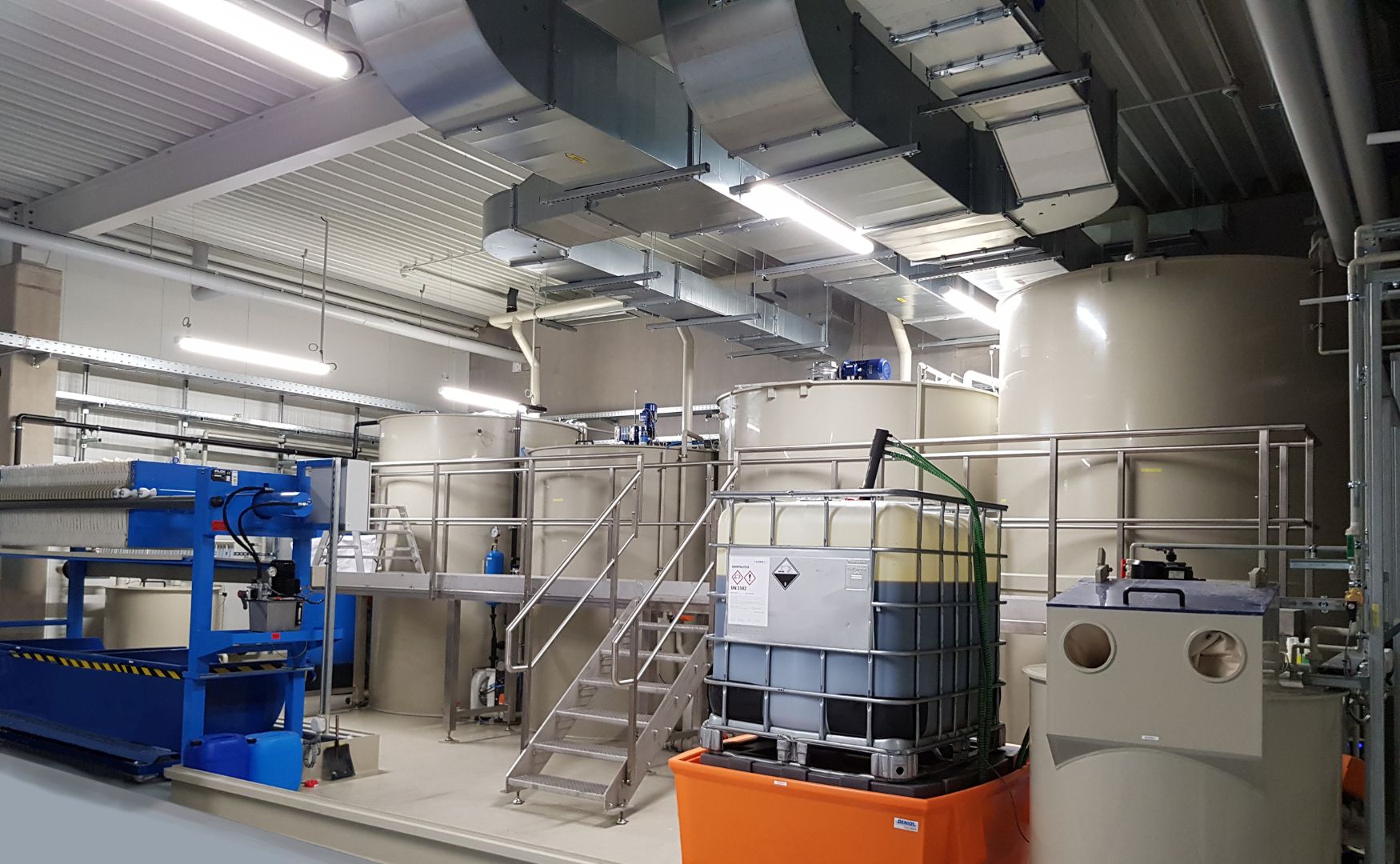
Photo: Our CP system ALMA CHEM MCW with sludge dewatering through our chamber filter press
Precipitation of heavy metals
The most commonly used process for removing heavy metals from wastewater is chemical precipitation. In this process, process additives are added to the wastewater to convert the heavy metal ions into poorly soluble compounds, which can then be separated from the water as solids. Here you will find an overview of our special process additives for wastewater treatment: ALMA AQUA
- Hydroxide precipitation: The addition of alkaline solutions such as caustic soda (NaOH) leads to the formation of metal hydroxides, which are generally difficult to dissolve and precipitate as solids. This method is particularly effective for metals such as copper, nickel and zinc. Precipitation typically takes place at a pH value between 8 and 10, depending on the metal.
Reaction example
Photo: Our dosing stations for neutralizing and precipitating agents, as well as our preparation station for flocculants. All equipment is from our ALMA AQUA product series
- Sulphide prec ipitation: Sulphide precipitation is often used for metals that cannot be sufficiently removed by hydroxide precipitation or are present in the presence of complexing agents. By adding sodium sulphide (Na2S) or other sulphide sources, metal sulphides are formed which are even less soluble than hydroxides. This method is particularly effective for removing heavy metals such as lead, mercury and cadmium.
Reaction example
- Precipitation by ferric chloride: Ferric chloride (FeCl3) can be used as a precipitant to precipitate phosphates and some heavy metals. It is often used as a pre-treatment before other precipitants are added.
Reaction example:
Emulsion splitting
The splitting of emulsions is an essential step in wastewater treatment. Chemical agents, so-called emulsifier breakers, are added to the wastewater to destabilize the stable oil-water mixtures. This allows the oil droplets to coalesce into larger droplets that are easier to separate from the water phase.
- Chemical splitting: Acids or basic compounds are added to change the pH value of the wastewater and destabilize the emulsion. A common approach is the addition of iron or aluminum salts, which act as coagulants.
Process engineering for the treatment of wastewater from the metal industry
Chemical-physical wastewater treatment (CP plants) in the metals industry comprises a variety of process technologies aimed at efficiently removing pollutants and treating wastewater to meet legal requirements. In this section, we take a closer look at some of the key process technologies used in CP plants: CP plants with sludge dewatering, flotation plants (dissolved air flotation) and selective ion exchangers.
CP systems with sludge dewatering
CP plants combine various physical and chemical processes to remove metals from wastewater. The main objectives of these plants are:
- Precipitation and flocculation: Heavy metals in wastewater are converted into poorly soluble compounds through chemical reactions. These precipitants, such as milk of lime or caustic soda, convert the dissolved metal ions into insoluble hydroxides or sulphides, which are then present as solid particles in the wastewater.
- Sedimentation: The solids resulting from precipitation are separated by sedimentation. In this phase, the solid particles sink to the bottom of the sedimentation tank due to their higher density compared to the water, where they form a settleable sludge fraction.
- Filtration: The clear supernatant water is often passed through further filtration stages, such as multi-layer filters or activated carbon filters, to remove the finest particles and organic impurities.
- Dewatering: The sludge produced during sedimentation is dewatered in a chamber filter press to reduce the volume and cut disposal costs.
System design
Sedimentation is a central process in CP plants in which suspended solids and precipitated particles are removed from the wastewater by gravity. Depending on the wastewater volume and pollutant concentration, CP plants can be operated as batch or continuous plants.
- Batch systems: These are typically used for small to medium volumes of wastewater or where the wastewater content fluctuates greatly. The wastewater is collected in a sedimentation tank and discharged after treatment in a discontinuous process. The advantage of batch systems lies in their flexibility and operational reliability.
- Continuous flow systems: These are designed for continuous wastewater volumes. The wastewater flows continuously through the system, with sedimentation taking place in a continuous flow operation. Continuous flow systems are particularly suitable for large volume flows and consistent wastewater compositions.
Two-stage precipitation systems: maximum pollutant removal
In many cases, sedimentation is supplemented by two-stage precipitation to ensure maximum removal of heavy metals and other pollutants.
- First stage: In the first precipitation stage, the metal ions in the wastewater are converted into sparingly soluble hydroxides by adding chemicals such as milk of lime or caustic soda. These hydroxides are generally less soluble and settle in the sedimentation tank as sludge.
- Second stage: In the second precipitation stage, special precipitants, such as sulphides, can be added to convert the remaining metal ions into more insoluble sulphides. This method is particularly effective in removing heavy metals that are present in the wastewater in the form of complexes.
Cyanide detoxification and chromium (VI) reduction: Specialized treatments
In addition to general precipitation, special detoxification processes such as cyanide detoxification and chromium (VI) reduction play an important role in CP plants:
- Cyanide poisoning: Cyanide is a highly toxic substance that occurs in many metalworking industries, especially in electroplating plants. Cyanide poisoning is achieved by oxidation, in which cyanide is oxidized to non-toxic cyanates or further oxidized to carbon dioxide and nitrogen. This is usually done by adding chlorine, hypochlorite or hydrogen peroxide.
- Chromium(VI) reduction: Chromium(VI) is another toxic heavy metal that is frequently used in the surface treatment of metals. To remove it from wastewater, it is reduced to the less hazardous chromium(III). This reduction is typically carried out by adding reducing agents such as sodium bisulphite under acidic conditions. The resulting chromium(III) is then precipitated as hydroxide in the precipitation plant and sedimented.
Sludge dewatering with chamber filter presses
After sedimentation, the resulting sludge still contains a high proportion of water, which must be reduced before disposal or further processing. This is where the chamber filter press comes into play.
- How it works: The sludge extracted in the sedimentation tanks is pumped into the chamber filter press, where it is dewatered under high pressure. The chamber filter press consists of a series of chambers covered with filter cloths. The pressure of the pumping forces the water through the filter cloths, while the solids remain in the chambers and form a dry filter cake.
- Advantages: The chamber filter press significantly reduces the volume of sludge, which lowers disposal costs and makes handling easier. In addition, the dewatered sludge can often be further processed or reused as a recyclable material.
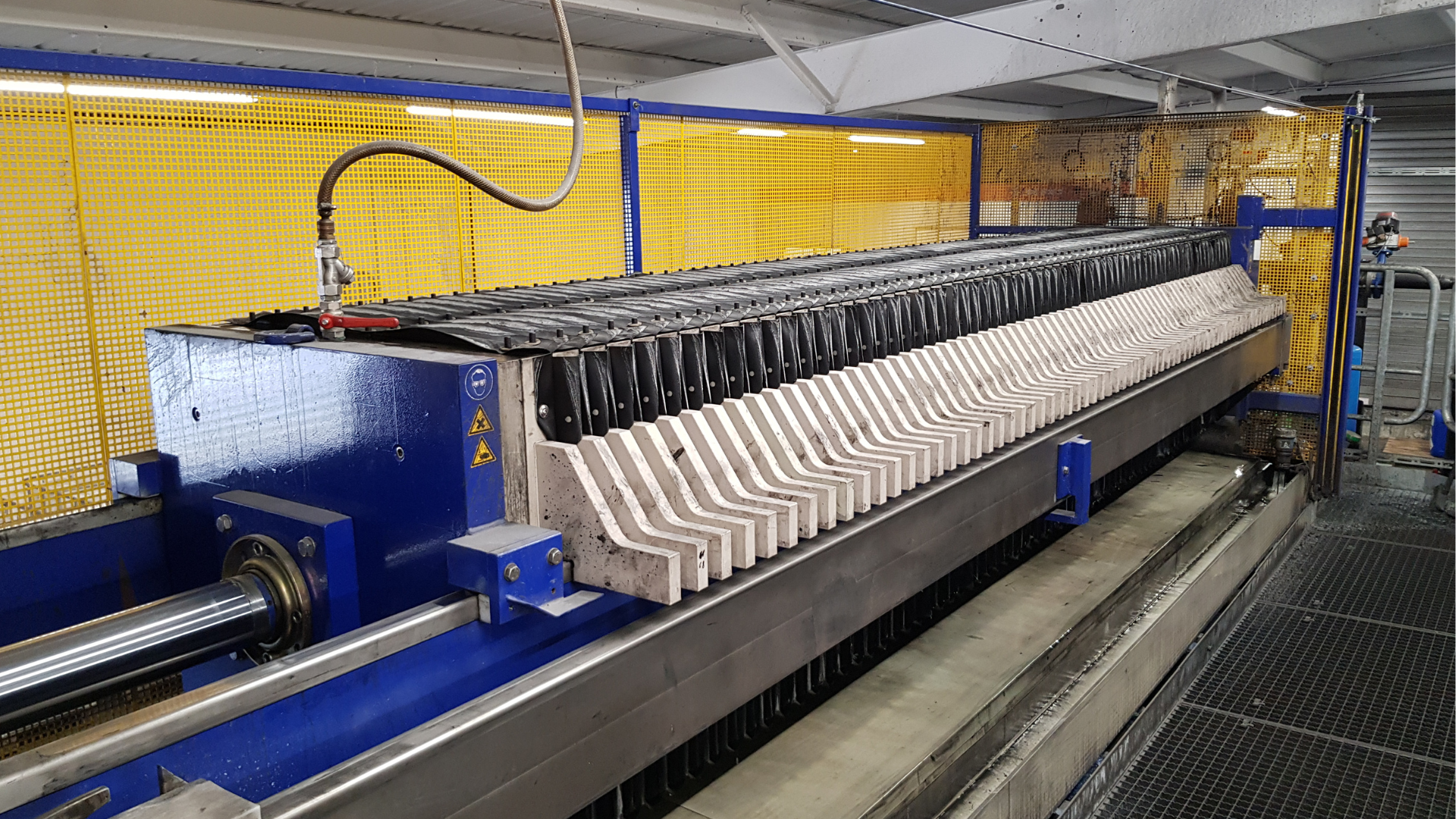
Photo: Our ALMA CFP chamber filter press for dewatering sludge from wastewater treatment plants
Flotation systems: Separation by buoyancy
Dissolved air flotation is a key technology in wastewater treatment that aims to remove the finest particles, emulsions and suspended solids from the aqueous phase. It works on the principle that air bubbles adhere to the particles to be removed and transport them to the water surface, where they can be skimmed off as foam.
Functionality
In the flotation plant, a coagulant is first added to the wastewater, which agglomerates the finest particles. The wastewater is then enriched with air, creating small air bubbles. These air bubbles attach themselves to the particles, which rise to the surface of the water due to the buoyancy of the bubbles. There they form the flotate sludge, which is removed mechanically by scrapers.
Advantages
- Efficient removal of the finest particles: Even very small and light particles can be reliably removed from wastewater by flotation.
- Versatility: Flotation systems can be used in various industrial contexts and are suitable for a wide range of wastewater types.
Process steps
- Addition of coagulants and flocculants: These chemicals help to combine the fine particles into larger agglomerates.
- Introduction of air bubbles: The wastewater is mixed with air, causing the particles to rise to the surface due to the buoyancy of the air bubbles.
- Skimming off the flotate sludge: The sludge formed on the surface, which contains the impurities, is removed mechanically.
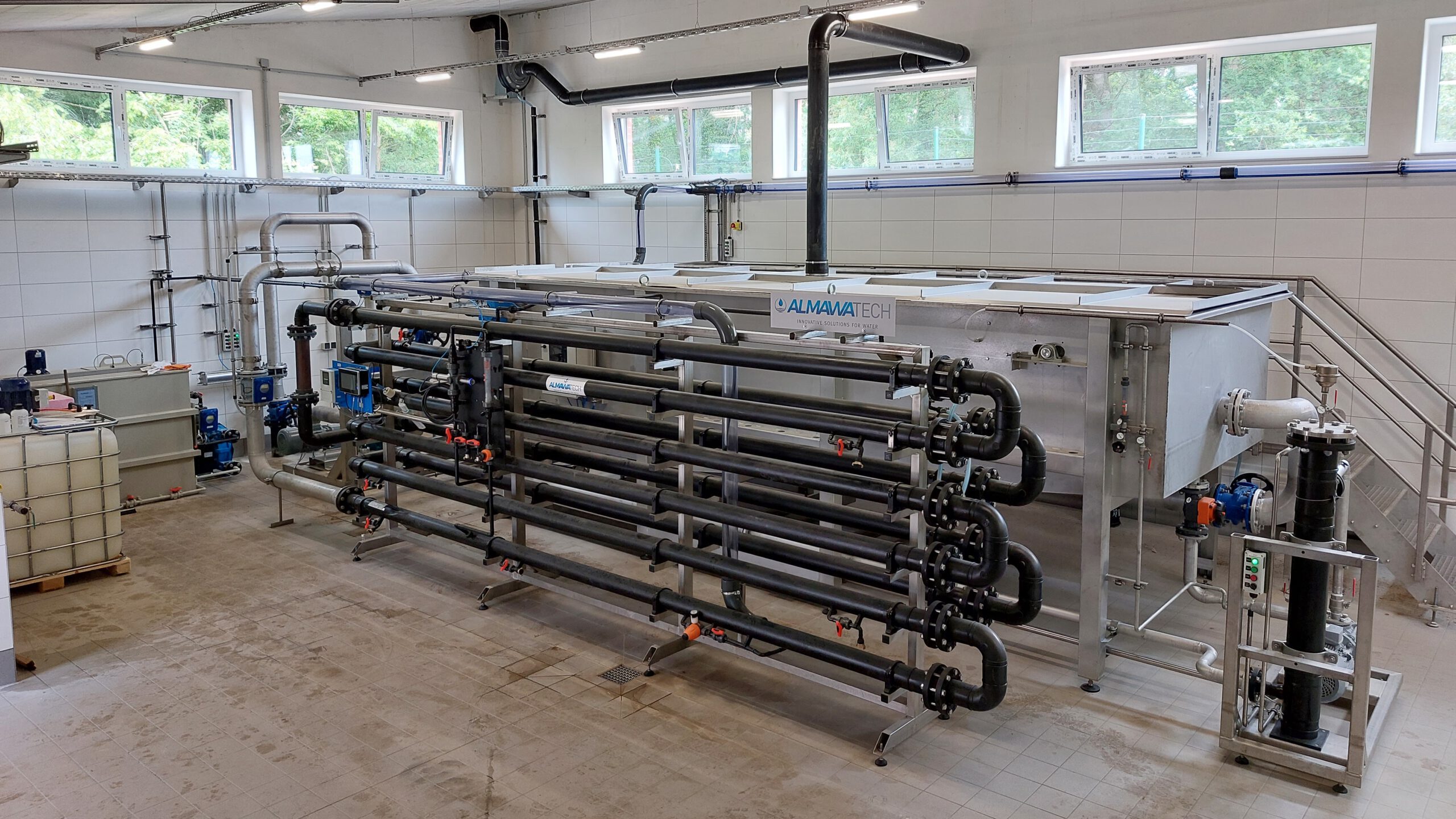
Photo: Our ALMA NeoDAF flotation system with tube flocculator and patented air saturation system
Selective ion exchangers: targeted removal of specific ions
Selective ion exchangers (ALMA ION) are specialized resins that can remove specific ions from wastewater. They are particularly useful for removing residual traces of heavy metals after precipitation and filtration that are not fully captured by conventional processes.
Functionality
An ion exchanger consists of a solid resin that can absorb certain ions from the aqueous phase through chemical bonding. In exchange, the resin releases other, less problematic ions into the solution. Selective ion exchangers are designed to preferentially bind certain metal ions such as lead, copper or nickel.
Advantages
- High selectivity: These ion exchangers can be specifically tuned to certain ions, which increases the efficiency of heavy metal removal.
- Regenerability: The resins can be reprocessed and reused after exhaustion by chemical regeneration.
- Environmentally friendly: As they remove specific ions from the waste water, the salt load in the waste water is not unnecessarily increased.
Process steps
- Flow through the ion exchange column: The wastewater is passed through the ion exchange resin layer, where the metal ions are bound.
- Exchange and regeneration: After the resin is exhausted, the ion exchange column is regenerated by treating it with a chemical solution (e.g. acid or alkali) that releases the bound ions and makes the resin functional again.
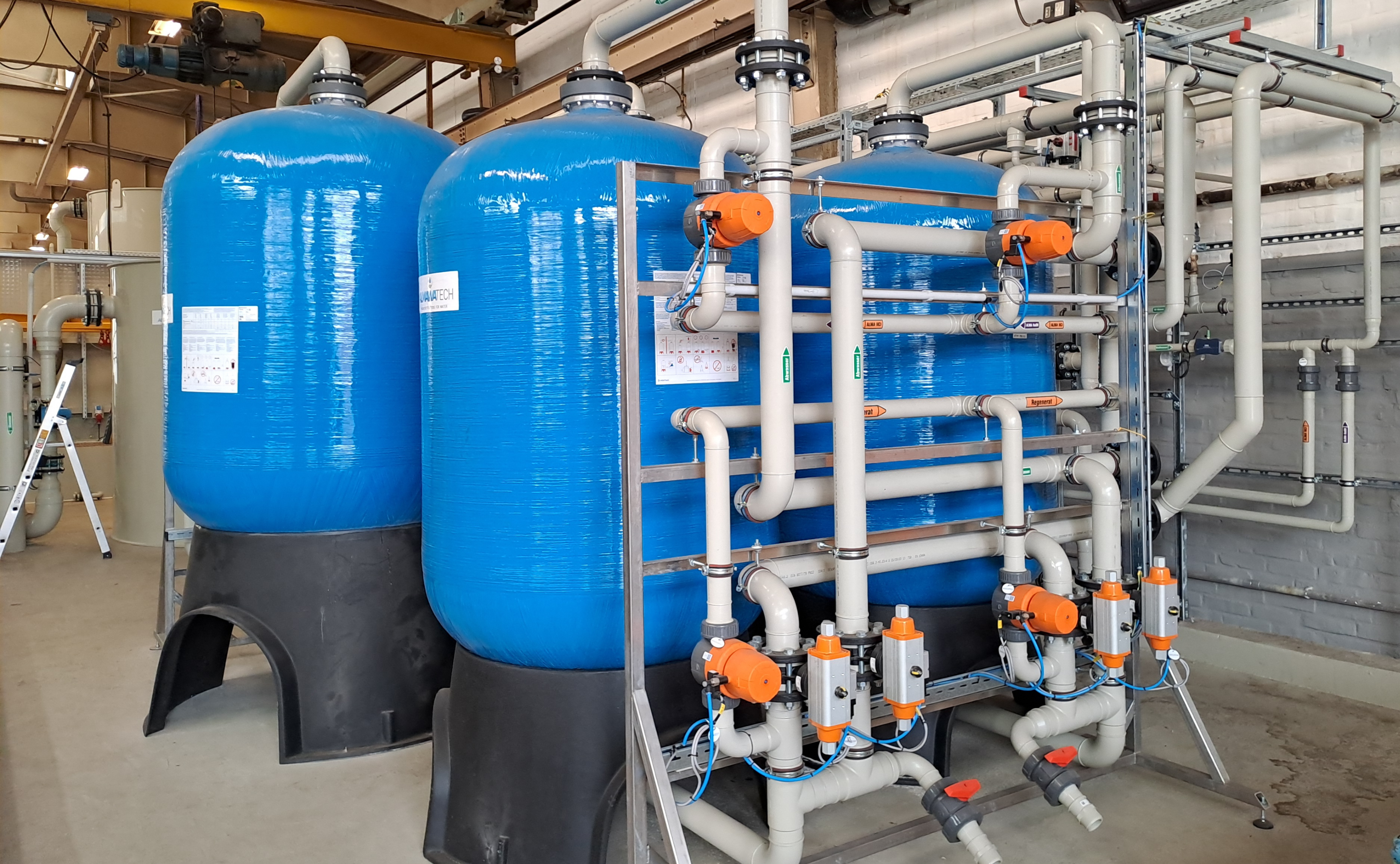
Photo: Our selective ion exchange system ALMA ION for the removal of heavy metals
Conclusion
Chemical-physical wastewater treatment in the metal industry is a complex process that requires careful planning and implementation. CP systems such as our ALMA CHEM MCW or our dissolved air flotation ALMA NeoDAF offer a flexible and effective solution for the removal of heavy metals, emulsions and other pollutants. By using modern process technologies such as precipitation, flotation and ion exchange, the strict legal requirements can be met and sustainable wastewater treatment ensured.
For further information and customized solutions for wastewater treatment in the metal industry, please do not hesitate to contact us.


